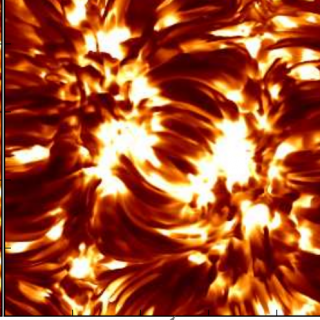Bibcode
Belluzzi, L.; Trujillo-Bueno, J.; Štěpán, Jiří
Bibliographical reference
The Astrophysical Journal Letters, Volume 755, Issue 1, article id. L2 (2012).
Advertised on:
8
2012
Citations
42
Refereed citations
35
Description
Recent theoretical investigations have pointed out that the cores of the
Lyα lines of H I and He II should show measurable scattering
polarization signals when observing the solar disk, and that the
magnetic sensitivity, through the Hanle effect, of such linear
polarization signals is suitable for exploring the magnetism of the
solar transition region. Such investigations were carried out in the
limit of complete frequency redistribution (CRD) and neglecting quantum
interference between the two upper J-levels of each line. Here we relax
both approximations and show that the joint action of partial frequency
redistribution and J-state interference produces much more complex
fractional linear polarization (Q/I) profiles, with large amplitudes in
their wings. Such wing polarization signals turn out to be very
sensitive to the temperature structure of the atmospheric model, so that
they can be exploited for constraining the thermal properties of the
solar chromosphere. Finally, we show that the approximation of CRD
without J-state interference is however suitable for estimating the
amplitude of the linear polarization signals in the core of the lines,
where the Hanle effect operates.
Related projects

Magnetism, Polarization and Radiative Transfer in Astrophysics
Magnetic fields pervade all astrophysical plasmas and govern most of the variability in the Universe at intermediate time scales. They are present in stars across the whole Hertzsprung-Russell diagram, in galaxies, and even perhaps in the intergalactic medium. Polarized light provides the most reliable source of information at our disposal for the
Ernest
Alsina Ballester